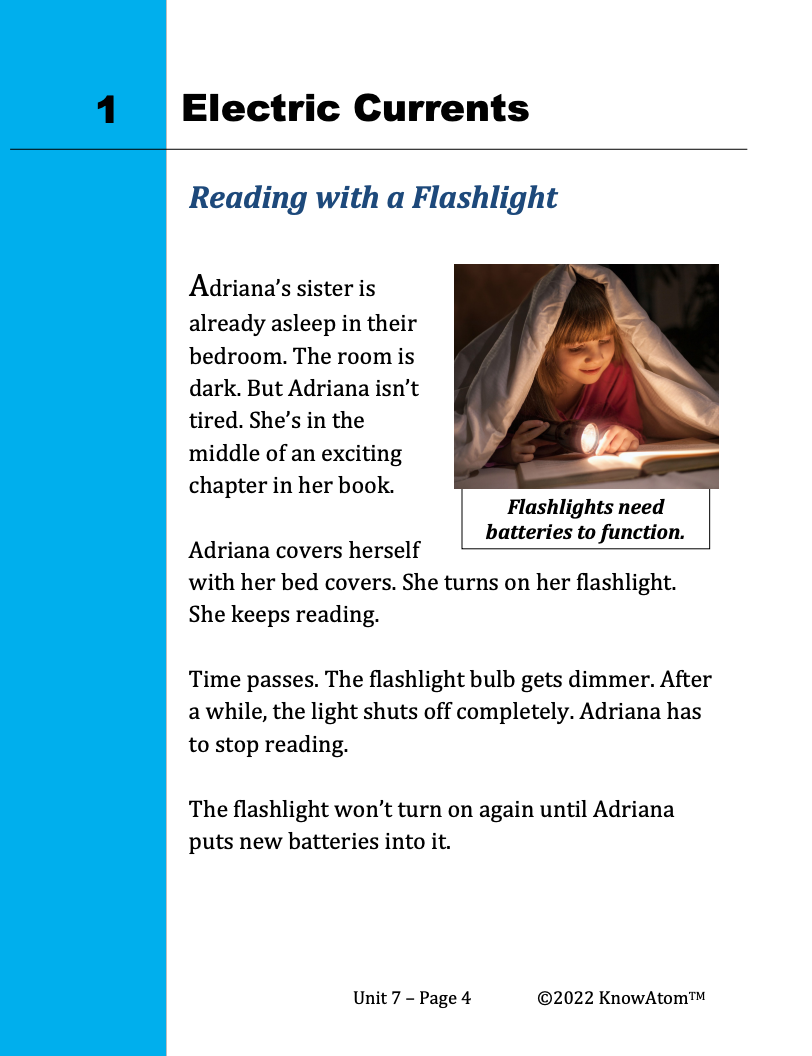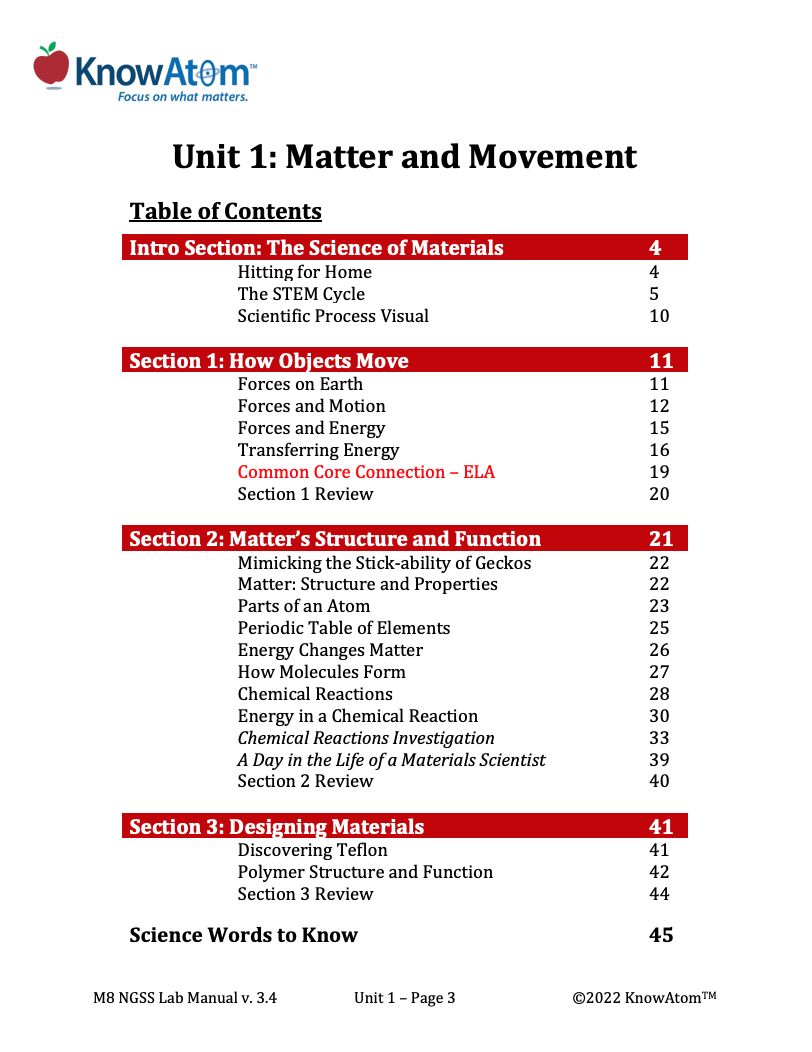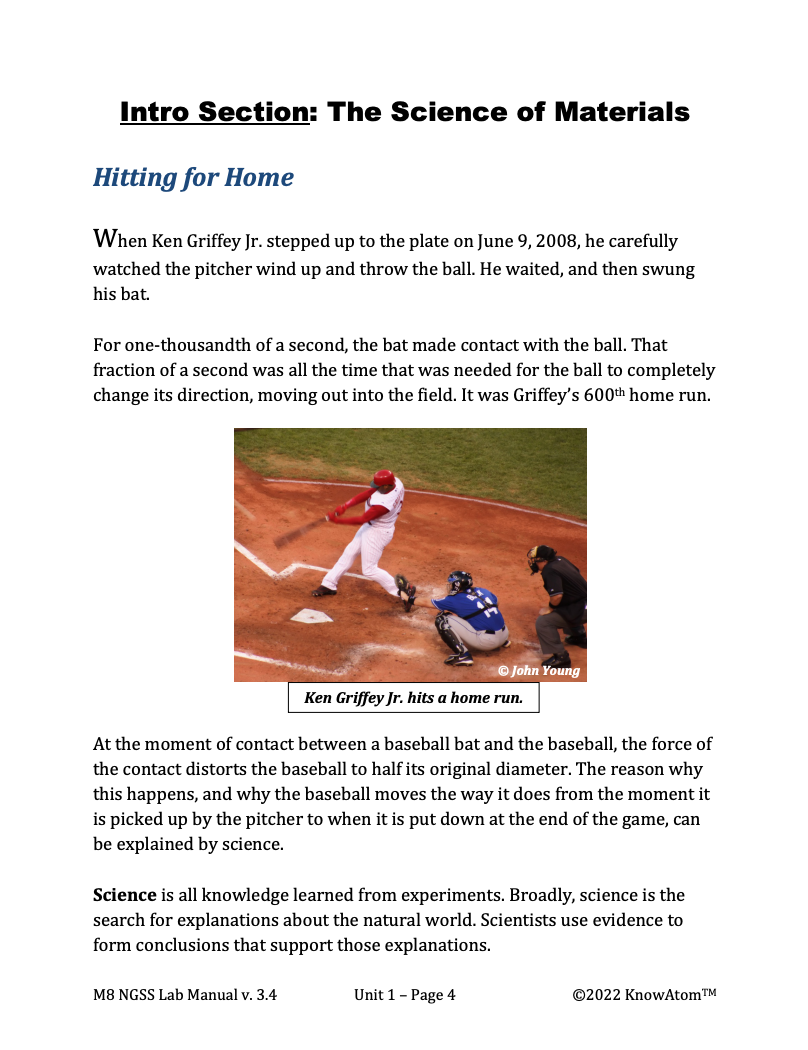
In this unit, students explore the science phenomena of how energy is transferred in a circuit to do work. In this lesson, students figure out the phenomena affecting the left and right movement of an electric car. This page is a high-level extract of this lesson.
.png)
In this unit, students are introduced to science and engineering by exploring several phenomena that relate to cooking. Students begin with an investigation into the structure of matter and how energy determines state of matter. This page is a high level look at key components of this lesson.
.png)
In this unit, students focus on interactions between matter and energy. In this lesson, students figure out the endothermic and exothermic phenomenon of chemical hot and cold packs to analyze matter and energy in different kinds of chemical reactions. This page is a high-level extract of this lesson.
.png)
In this unit, students explore several phenomena that relate to cooking. In this lesson, students evaluate chemical reactions, and use that knowledge to engineer a prototype that transfers energy by chemical processes. This page showcases key components of this lesson.

In this unit, students focus on the science phenomena of the relationship between gravity and motion, tracing how gravitational potential energy transforms to kinetic energy in different energy systems. In this lesson, they investigate the relationship between the drop height of a bouncy ball and its rebound height. This page is a high-level extract of this lesson.
.png)
In this unit, students use what they know about the relationship between energy and matter to investigate phenomena of how energy powers the cycling of Earth materials. They begin with this lesson on modeling the Earth processes that form different kinds of rock. This page provides an overview of this lesson.
.png)
In this unit, students explore phenomena of natural processes that cause Earth’s surface to change over time, analyzing how energy causes Earth’s matter to transform and cycle from one form to another. In this lesson, students investigate how Earth materials are continually being reshaped and reformed by multiple processes that are powered by energy from Earth’s hot interior and the sun. This page is a high-level extract of this lesson.
.png)
In this unit, students explore the natural processes that cause Earth’s surface to change over time, analyzing how energy causes Earth’s matter to transform and cycle from one form to another. In this lesson, they trace phenomena of how energy is transferred in chemical reactions, which allows scientists to produce ethanol to use as an alternative energy source. This page showcases each component of this lesson.

In the last unit, students explore how objects can be seen when they are illuminated by a source of light and how light passes through opaque, transparent, and translucent materials differently. In this unit, students apply what they have learned about light and sound to design a solution that can be used to communicate over a distance.

In this unit, students explore the relationship between matter and energy using the phenomenon of material properties to discover why certain materials are useful for a particular function. For this lesson, they focus on the role of energy in changing matter during a chemical reaction phenomena between two substances. This page is a high-level extract of this lesson.

In the last unit, students explored how shelters help animals survive in their environment. In this unit, students investigate the relationship between forces and motion, building propeller cars to observe action-reaction forces, the relationship between the distance their car travels and the amount of force applied, and how friction affects motion.

In this unit, students use the phenomenon of why certain materials (such as the materials that make up a baseball) are useful for a particular function to explore the relationship between matter and energy phenomena. In this lesson students manipulate the properties of a polymer bouncy ball by changing the amounts of reactants in a chemical reaction. This page highlights parts of this lesson.
Standards citation: NGSS Lead States. 2013. Next Generation Science Standards: For States, By States. Washington, DC: The National Academies Press. Neither WestEd nor the lead states and partners that developed the Next Generation Science Standards were involved in the production of this product, and do not endorse it.
